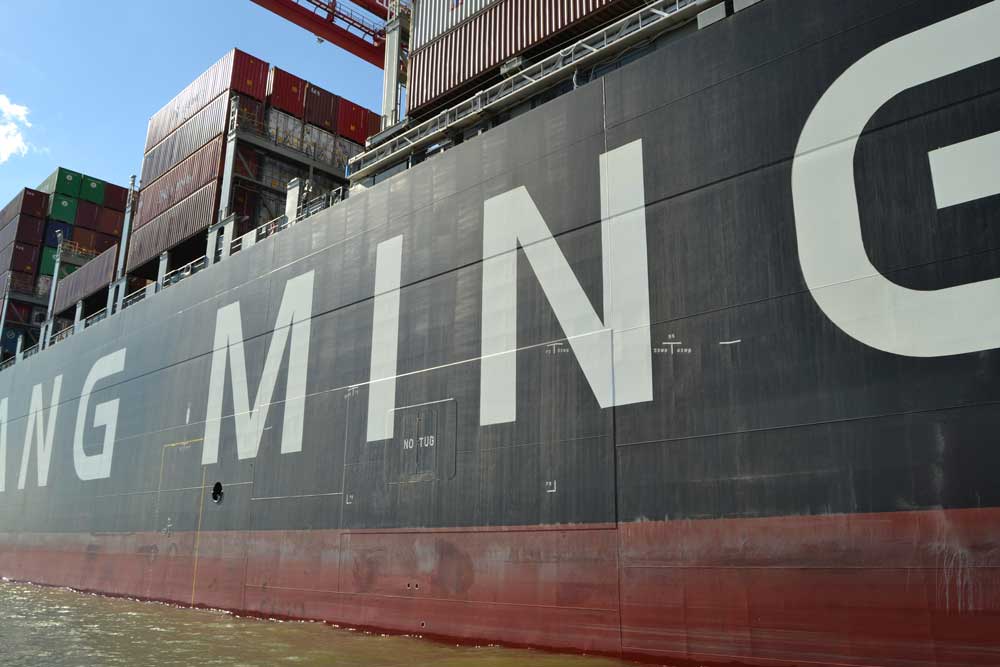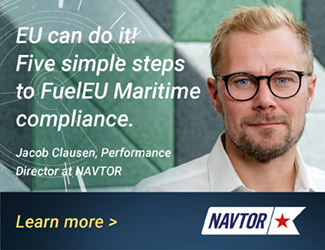Clean technology company Silverstream is growing despite the Covid-19 crisis as fuel saving technology, such as air lubrication, stays in demand. CEO Noah Silberschmidt bets on thorough testing and transparent evaluation methods as well as artificial intelligence
In 2016 you won the HANSA Maritime Innovator Award for successfully commercializing the Silverstream air lubrication system – how are[ds_preview] things today?
Noah Silberschmidt: We started commercializing our system about two years after we did the first pilot with Shell on an MR tanker in 2014. Then we looked through two years of data to do in-service, all weather conditions performance analysis in the worst conditions in deep draft only. The first pilot installation got 5 % fuel savings in service. Even under the least favourable conditions we had 5.1 % savings in all drafts and weather scenarios. Since then, we have changed and optimized the system, for example we use a different design of air release units in the flat bottom of the hull. We have also redesigned the configuration and were able to half the number of compressors compared to 2016. We have an automation system that is more intelligent, taking into account the different operating conditions.
We are continuing to develop our technology for example by doing software updates, and we are working on using our data and artificial intelligence. We are looking at patterns in our data because we want to be able to optimize in-service in real time. You always have some variety when you are on the high seas, but that is why we want to use AI, also because we want to find out these performance patterns at different drafts, speeds etc.
What we have figured out after we worked with Southampton University for three years is that our data lends itself very well to optimization using artificial intelligence. On board, we have an automation system that communicates directly with the vessel computer and then directs orders based on vessel speed, draft and outside weather scenario to our compressors. It would be very interesting to use this data we get from different vessel classes and weather patterns and put that into our operation model. Ideally, we can provide the owner with a better performance the more in-service data we get from him.
A variety of companies have over the last 50 years tried air lubrication without much success. We try to be extremely prudent in how we are doing the performance analysis. We are typically agreeing with clients upfront how the sea trial procedure will take place, so that we are afterwards 100 % in agreement of how the tests are done. If that is not defined beforehand then you can look at number afterwards and pretty much get the sea trial to fit the purpose. Instead we very much believe that there should be – not just for air lubrication and for ourselves, but basically for all engineering aspects – a certain protocol that includes using Big Data, a lot of data points, a lot of sensors to feed in, to look at and then analyse. That is for example one of the outcomes of the global industry alliance in collaboration with the IMO that Silverstream is a part of.
Besides cruise ship projects, you have won an LNG carrier retrofit framework agreement and a recent 14 unit newbuild contract with Shell/HHI – why this success in the LNGC segment?
Silberschmidt: We have selected certain segments and key accounts within shipping that are ambitious with regards to efficiency and their sustainability agenda. Shell, Grimaldi and Carnival are such accounts. Shell has been a great supporter of us along the way. LNG carriers specifically are expensive vessels with high fuel consumption and busy operational schedules. Vessels that are used a lot and have busy schedules will, in money-terms, have a bigger savings potential. With payback or emission reduction in mind, it is of course better to look at a vessel that is steaming 300 or 310 days a year compared to 220 days a year. If you then have a vessel that is typically steaming at 18 or 19 kn instead of 10 kn you will again have a bigger fuel consumption saving.
The design of an LNG carrier has ideal proportions for air lubrication but that does not mean that other vessels are not also great candidates. When we started, we focused on certain segments where we had good relationships and now we pretty much target all segments to prove that air lubrication will reduce the frictional resistance work for all vessel types. The container shipping segment is a large segment with a variety of vessels, many steaming rather fast. This is also a very attractive segment with large fuel saving gains and we have upcoming projects coming online. Other segments are the really deep draft vessels with maximum fully loaded drafts of 23m which require a different setup of our system. We have contracts for such dry and wet bulk ships that will probably be published in a couple of months.
Many owners believe that, unless it is actually proven on exactly their vessel type plus/minus 5 or 10 m in length or draft, we cannot estimate the savings. But if we have it on ten different types of vessels and we have a mathematical model and can explain exactly why on this vessels we save 5 % and on this vessel 11 % then we think that the industry will accept it and understand that the performances can be guaranteed and that air lubrication is a standard product that needs to go on the makers list at all leading ship yards.
It doesn’t really matter what kind of vessel it is. There will always be an opportunity for reducing the frictional resistance, that is just physics. What we are trying to do is to show for each vessel segment that air lubrication works well, saves fuel and there is a good payback. This should encourage parties in the shipping logistics chain to use our technology as it is fulfilling the ESG requirements. The majority of investments in the equity markets comes from life insurances and pension funds. And most of these investors today will have investment criteria for a company being ESG compliant. So, basically they are not able to invest in a company that does not adhere to basic standards.
May the Covid-19 pandemic stop investing in green technology?
Silberschmidt: If we take note of the newbuild market with a decreasing orderbook, then you have existing owners and fleets that are obviously not continuing to improve performance due to the extension of longevity. The fleet is more likely to deteriorate. Then you have companies that have promised publicly that they will significantly reduce or reach zero emissions by 2030, 2040 or 2050. So, if they are to be believed and not getting to these targets through fleet renewal, then they have to do something to the existing fleet. The Silverstream System can both be fitted for newbuilds or retrofits. With this in mind there is a great opportunity and need for the existing global fleet to start retrofitting technologies – like air lubrication – to fulfil emissions targets and operational cost reductions in the coming years.
Interview: Felix Selzer














